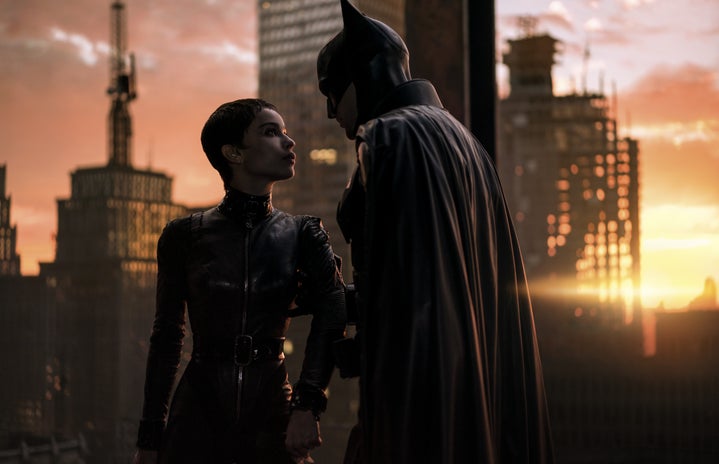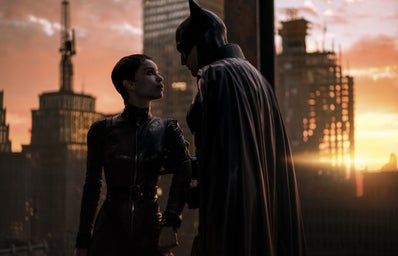Warning: This article contains spoilers for The Batman. Reader discretion is advised.
If you’re an avid superhero lover like me, you’ve watched the latest revival of The Batman series. This new version most notably stars Robert Pattison, Zoe Kravitz, Jeffrey Wright and more. This Batman version has been different than many before it and takes a whole new approach to discuss the idea of Batman and what it truly means to be a hero, especially one that’s dealing with trauma, which we often don’t see explored. In most versions of “the hero,” we see them as invincible. They’re powerful, solid and have mastered all of life’s burdens. But, in this version, that’s not something to be said of Bruce Wayne.
As most know, the central part of Bruce Wayne’s backstory involves the young Bruce losing his family as a child and becoming an orphan. But in this version, we don’t see that confident, self-assured and strong vigilante that we have come to know and love. Instead, we see a human dealing with their emotional trauma and masking it through the idea of vengeance. Instead of communicating and reaching out, we see him struggle in ways we never have before — from seeing him stumble in fights to not expressing himself in the certified playboy persona of Bruce Wayne. In fact, in the movie, he seldom appears as Bruce Wayne and instead appears mostly as Batman with the black smudge of ink around his eyes or reviewing clues like Sherlock Holmes in his watch system. This is his way of dissociating from the trauma that he was too young to process and has neglected to explore as an adult. In addition, we also see him dissociate through his way of recalling memories, primarily through him forcing himself to remember and by his surveillance method to review his memories. This is done by his camera contact lenses that enable him to watch and review his own life like a movie. Therefore, showing how he’s still struggling from the parting of his parents and how he chooses to react in his trauma response.
In the movie, he appears disheveled, hiding from the world around him and his responsibilities outside of the Batman persona. He seems silent and almost as an observer of the world around him. In sum, Bruce is a recluse, lost to the mask of Batman and has lost his own identity. Even the actor who portrayed him on the screen claimed that Bruce’s attachment to Batman is a way to escape the pain and trauma and find relief from his own anxieties, emotional baggage, and make meaning in his confusing life. In a way, I believe that he doesn’t realize the extent to which he dives into the persona of Batman. But, throughout the film, we slowly see him come to the realization that his idea of vengeance and what he has created Batman to be isn’t right. Instead, we see him state that vengeance isn’t what people need, nor is it what he needs. Instead, they need hope. This message of hope is a great message to help Bruce regain his persona and find himself once more, and throughout a new series, we may see this Batman become Bruce Wayne once more and master his trauma. Through learning that he still has loved ones around him and that he can grow as a person and as his identity of the masked vigilante of Gotham. But in a way, it’s comforting to know that even great superheroes like Batman struggle with mental health just like the rest of us. And this movie is a great way to show the full extent of trauma and dissociation in a hero that we all know and love.
So, give it a watch or rewatch and dig deeper to see the psychological trauma response of the great Batman.


